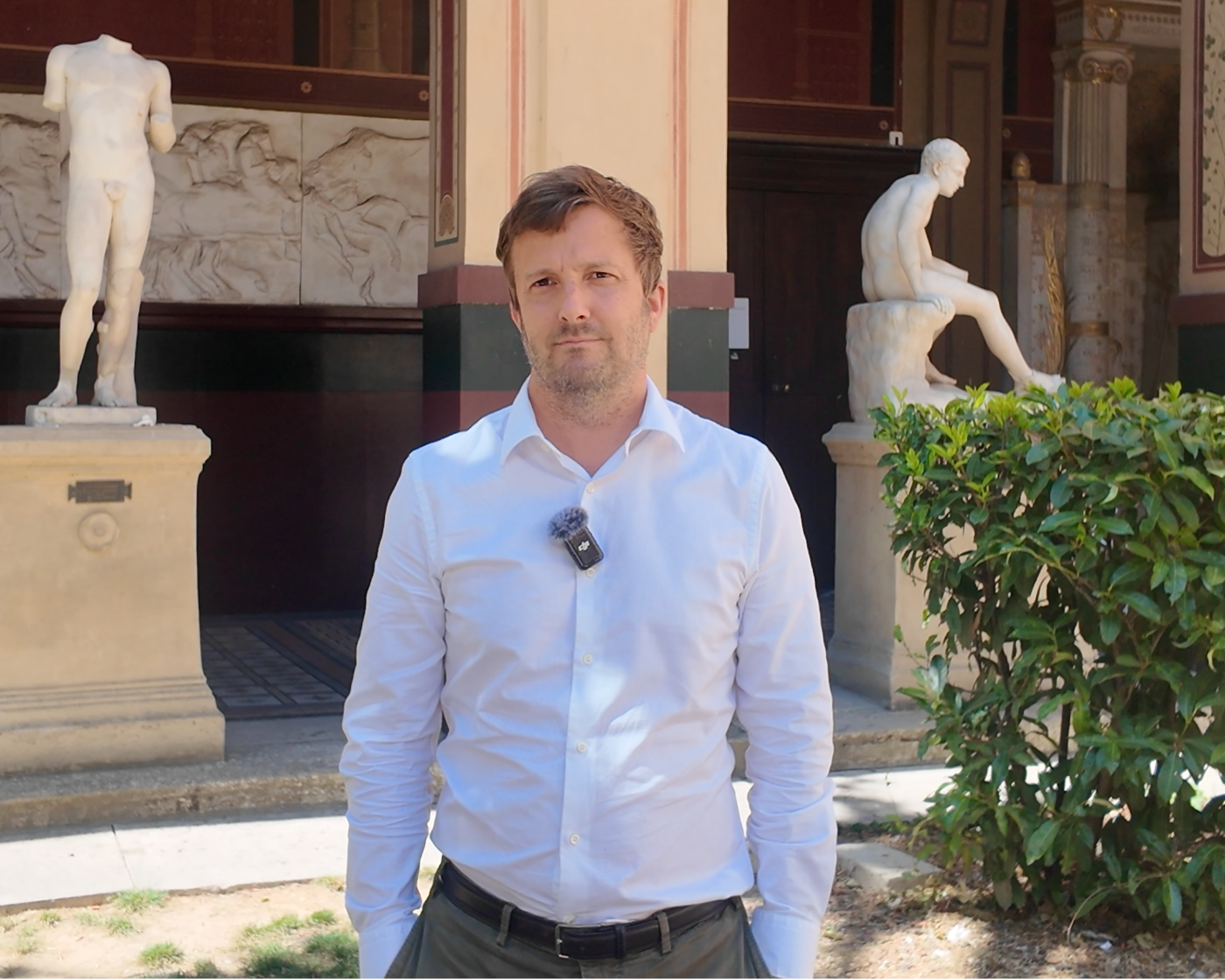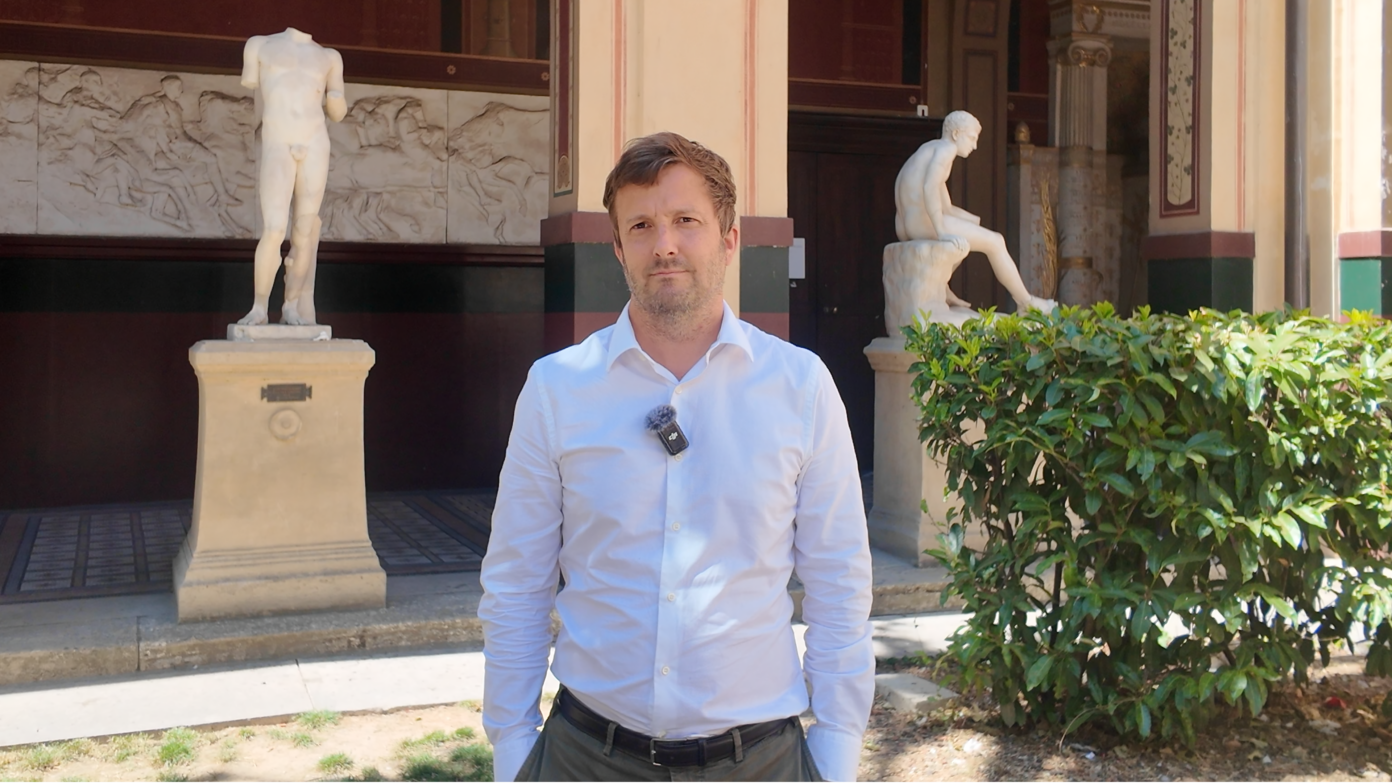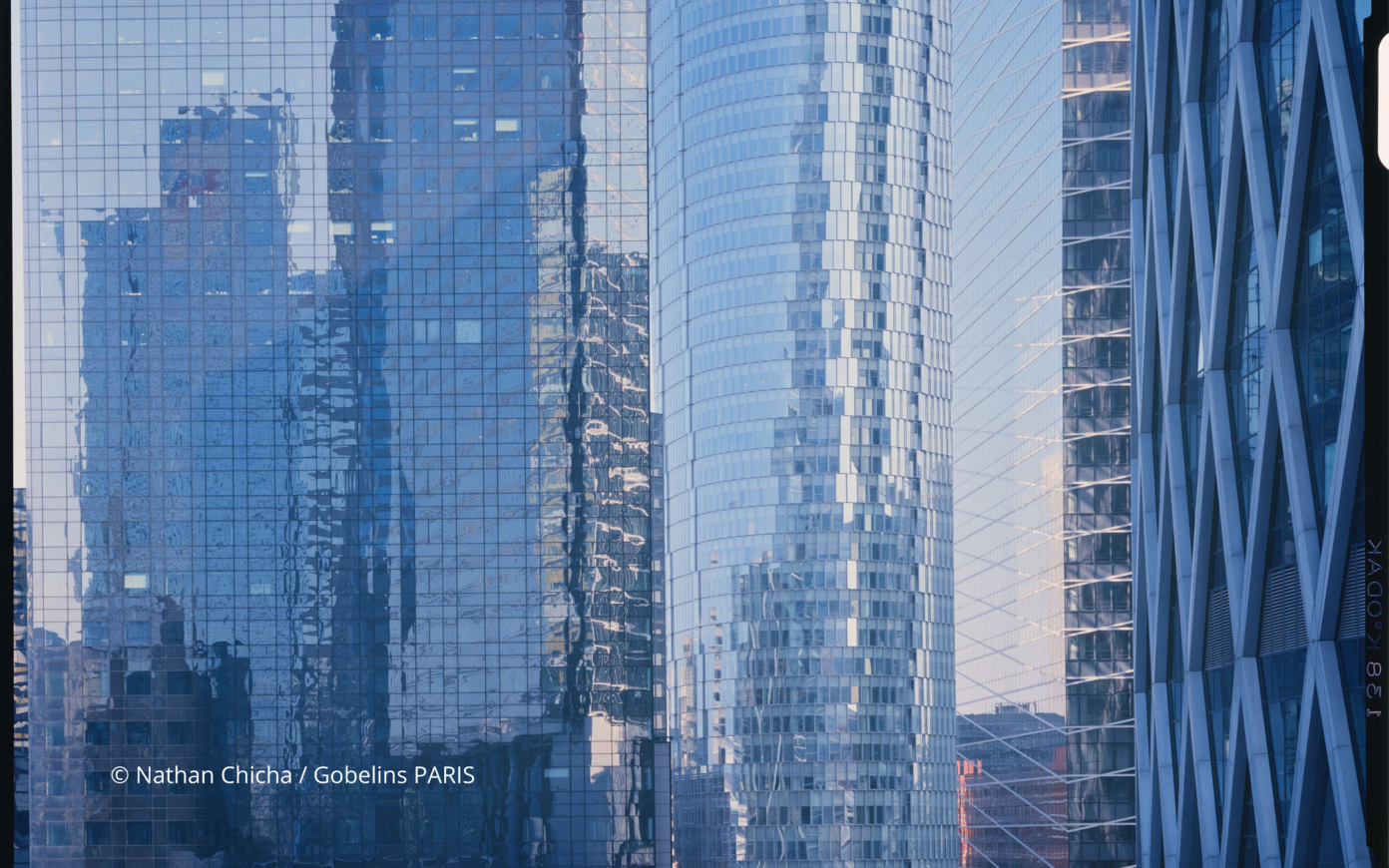You have studied the construction of the ecological narrative in architecture. Could you briefly outline the context of this emergence?
The concept of a “narrative” is borrowed here from Jean-François Lyotard, who identified it in 1979 in The Postmodern Condition. He defined it as the discourse that a given culture tells itself regarding its own beliefs. In line with this approach, I have tried to establish how the development of environmental awareness in the architecture community in the 1990s could be understood as the emergence of a new narrative within that community.
Certain fringe communities, especially those of the American counterculture, hinted at concern for ecology in the 1960s; several non-governmental organizations, following the lead of hippie communes and Drop City,A Colorado community that lasted from 1965 to 1970 and formed the first rural hippie commune. then addressed the issues of re-use, energy, and nomadic living. The Stockholm Earth Summit in 1972 and the 1973 oil crisis further fueled these concerns.Caroline Maniaque’s Go West. Des architectes aux pays de la contre-culture (Marseille: Parenthèses, 2013) provides particularly relevant insights on this subject. See also Fanny Lopez, Le rêve d’une déconnexion. De la maison autonome à la cité auto-énergétique (Paris: Éditions de la Villette, 2014). It was not until the late 1980s, however, that these issues began receiving a lot of media coverage, becoming institutionalized, and gaining legitimacy. The creation of the IPPCThe Intergovernmental Panel on Climate Change, an organization that was set up in 1988 at the request of the governments of the Group of Seven.—followed by the inception of the European Environment and Health Committee and the Rio Earth Summit—led to an unprecedented level of media coverage. These issues were finally taken up beyond fringe communities and the construction industry started working on them following the signature of the Kyoto Protocol and its binding resolutions regarding the energy sector. Ecology thus became institutionalized through the energy prism before opening up to other fields that architects have endorsed since the 1990s.
This was probably triggered by the eschatological climate, the end-of-the-world atmosphere that followed the BhopalA major industrial disaster that occurred in India in 1984. and Chernobyl disasters, but also the end of the euphoria of post-modernism, which extolled the idea of dancing on the ruins of modernity, yet to dance nevertheless. The “No Future” punk calling card really started taking on its full meaning at the end of the 1980s. Around the same time books addressing the environmental question such as Félix Guattari’s Three Ecologies, Michel Serres’ Natural Contract, Bruno Latour’s We Never Have Been Modern, and Luc Ferry’s New Ecological Order were published; they offered very different readings and therefore prompted a debate. Public opinion was alerted and certain pioneering architects such as Jourda and Perraudin, Lacaton and Vassal, Édouard François or Philippe Rahm—to mention only the French ones—took up this issue. It is against this background of chaos and growing concern about energy-related issues among builders—spurred on by public intellectuals and a number of pioneers—that the ecological narrative took shape in the architecture community.
What does this “narrative” mean?
I realized that the ecological narrative was a way of reading the Anthropocene and that it allowed me to offer a broader vision of what some people were calling the ecological crisis or the energy transition. Since the Anthropocene thesis is not focused only on energy-related issues, it causes a shift from a period of crisis, which could be overcome thanks to the use of technical tools, to the long-term time frame of geology. As a result, the theme of the ecological narrative suddenly takes on another dimension.
Christophe Bonneuil and Jean-Baptiste FressozThe authors of L’Évènement Anthropocène (Paris: Seuil, 2013). This book provides a deconstruction of the concept of the Anthropocene as a “geological epoch during which the human species is said to have become a telluric force,” eventually proposing to define it as the “narrative” constructed by environmental technicians and engineers to legitimize new kinds of actions, including geo-engineering. distinguish between two antagonistic readings of the Anthropocene. On the one hand, it can serve the interests of geoengineering by asserting our might and our power and repeatedly drawing solutions from Progress, with a capital “P,” and in particular from technological achievements. In contrast, is the idea of a degrowth society that calls into question the aporia of modernity and emphasizes behaviors that are adapted to the disruptions at play. This other perspective offers a somewhat “offbeat” approach to production models and lifestyles, whereas the energy angle leaves us in a modernist position, offering to find tools to allow us to continue living in the same way as before.
The ecological narrative, as does the Anthropocene, places humankind in the delicate position of being both a victim, a sinner, and a protagonist on a quest for a more virtuous society. Humankind’s responsibility for the changes affecting the planet has become undeniable. Calling this period the Anthropocene—the human epoch—raises many questions, however. Within a Marxist framework, Bonneuil and Fressoz propose the concept of a Capitalocene, while I’d be inclined to talk about a Modernocene given that the values of modernity have indeed brought about the dissociation of our relationship to the living world, to the milieu, and to nature.
How is this expressed in architectural projects? Do new relations to the living world reveal themselves through these means?
Before the thunderous emergence of sustainability in architecture in the mid-2000s, there had already been a number of manifest examples of projects bearing a strong concern for the environment. In 1998, Lacaton and Vassal designed a house in Cap Ferret that takes the issue of the integration in the natural environment to a whole new level, in this case in the particular context of a coastal dune. The stilts that secure it allow for the sand to move freely below the house, allowing the landscape to retain its ecological dynamics. The presence of the dwelling does not harm the pine forest either, given that the architecture is developed around it and that no tree was cut down for the construction. Tree trunks pass through the walls, emerge from the floors of the living areas, and become elements of daily life which the residents bond with. It is obvious that living in such a place invites us to consider the “objects” that make up the environment very differently.
In the redevelopment of Tour Bois-le-Prêtre, another project by Lacaton and Vassal, with Frédérique Druot, it is more about the question of the “milieu,” See the interview with Augustin Berque and more specifically that of a site of “unremarkable” heritage. This project considers “what already exists”—in this case, not the dune of Cap Ferret but a high-rise building from the late 1950s. Basing one’s approach on the extant structure and having certain elements of the former architecture show allows the new envelope to retain some of the site’s past. The building is transformed more than it is replaced. The Tour Bois-le-Prêtre project does not refer directly to the living world but having to learn to live with a building that is burdened with a somewhat value-laden imagery is a way of taking part in an Anthropocene narrative. The idea is to learn to consider one’s environment benevolently, whatever it may be, and to find the appropriate tools to get to grips with it in a more successful way.
Nantes’ Lieu Unique, a former biscuit factory transformed into a cultural center by Patrick Bouchain, also provides a good example. Rather than sending some drums that had been used to store toxic substances to Africa, where they were supposed to serve as building materials for a school, Patrick Bouchain decided to use this “local resource” in his project. He thus makes a stand against shipping waste to Africa and makes us confront our own system of production, compelling us to accept our environmental responsibilities. In Bruno Latour’s words, “We must learn to live with Frankenstein”: we must identify the framework and the conditions that would enable us to live with our “monsters”; these are not cultural or natural anymore, but hybrids.
For architects, the challenge is to find modalities of benevolence to connect people with their milieu—the “natural” milieu but also the anthropized and degraded milieus—so as to bear a certain form of responsibility and remembrance. The idea is also to increase the number of parameters that are taken into account, to give a voice to the typically voiceless, the wind or the bees for instance, by going to the point of showing some consideration for the existence of mediocre architectures.
Does acknowledging doubt and uncertainty regarding the unpredictability of the elements participate in renewing the sacredness of the environment? How could architecture capture this change in our relationship to the world?
The Bruder Klaus Field ChapelThe Bruder Klaus Field Chapel, which is dedicated to Saint Nicholas of Flüe and located near Wachendorf village, close to Cologne, was inaugurated in 2007. designed by Peter Zumthor is quite representative of the way architects can engage in a form of sacredness in the architecture of the Anthropocene. Zumthor raised a wooden frame, poured concrete over it and then burned it, thus questioning and disturbing the public both by shaping a volume with a material that leaves some visible traces and that we can feel yet that is also absent. The question of the milieu, of matter, and its disappearance thus arises, involving a certain form of sacredness. It seems to me that the projects that include this dimension are more successful in overcoming the strictly down-to-earth approach to environmental issues that predominate. In his redevelopment of the port of Zadar for instance, Nikola Bašić created a “Sea Organ,” which is a musical device made of pipes built under rows of steps on the quayside and that uses the force of the waves to produce harmonious sounds. The hybridization of natural elements and constructed elements creates a very special atmosphere that verges on the sacredness and that embodies a dialogue between nature and culture. The public space thus becomes a drama and a concert, at the same time as it raises public awareness of the environment. Architects must reflect on these modalities of the encounter between the public, the natural elements, and what is extant, in the broadest sense, both from the living world and transformed architecture.
Do you think these architectures of the Anthropocene are changing our relation to time?
The energy transition paradigm is linked to the concept of a crisis, and therefore, by definition, to a relatively short time frame. It can be overcome and suggests that something will eventually emerge after the crisis is over. The Anthropocene denotes a geological epoch, however, occurring over a duration that is beyond the scale of human life, and one that is hotly debated given that some people believe it to date back to the discovery of the Americas. In addition to projecting us back much further, it also projects us forward much further, truly on the geological scale. With the emergence of ecological issues, many projects have started to tout their smaller energy footprint. Sustainability has therefore not necessarily generated a more lasting form of architecture, as many responses are, on the contrary, asserting forms of architecture that are, counterintuitively, transient. In reality, the onset of concerns related to recycling has perpetuated this idea of transience by reintroducing materials in various successive life cycles. The issue of re-use has emerged notably via the Pavillon de l’Arsenal’s Matière grise exhibition. Objects we deemed obsolete are now being offered a second lease on life, and perhaps even a third or fourth one, which raises the question of the temporality of buildings. Is the Tour Bois-le-Prêtre exactly the same as in 1959, when Raymond Lopez designed it? De facto, it has undergone a number of changes, first those carried out in the 1990s by the architectural engineering firm Tecteam, then in the 2000s with the architects Lacaton, Vassal, and Druot; it nevertheless retains certain characteristic features. The transformation process raises questions both on the temporality of architecture and on the capacity of “what remains” from a project to carry over its key features.
In 2016–17, the students of ENSA Paris-Malaquais worked under my guidance on the design of an Anthropocene monument, following on the “Anthropocène Monument” exhibition that Bruno Latour organized at Les Abattoirs in Toulouse. Over the course of the semester, they defined the conditions of an architecture for the Anthropocene, from the concepts it builds on to its materiality, its temporality, and its relationship to its surrounding milieu. The projects raised many relevant issues and highlighted the younger generation’s interest in this subject. This is an encouraging sign.
This article was initially published in Stream 04 – The Paradoxes of the living in November 2017.
order the book-magazine











